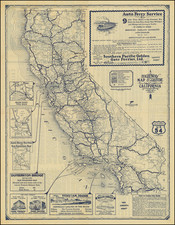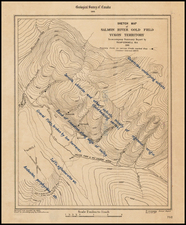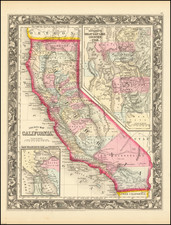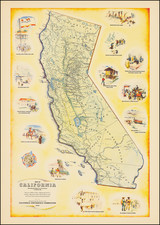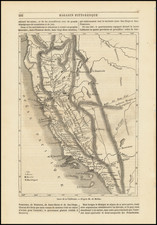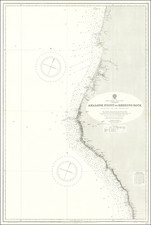Early Geological Mapping of the Southern California Metropolitan Region
Scarce geological map of northern eastern Los Angeles, centered on the Pasadena and Glendale area, published by the State of California.
The map was issued in the same year as the 1934 Parkfield Earthquake, the second major event along the San Andreas Fault after it was first discovered by UC Berkeley geology professor Andrew Lawson in 1895. He determined that the fault extended all the way to Southern California following the San Francisco Earthquake of 1906, which this event supported.
The map extends from the San Gabriel Mountains in the north to the Puente Hills and the Santa Monica Mountains in the south. The cities of Pomona, Pasadena, Glendale and Burbank are shown. Twenty strata dating mainly to the cretaceous and younger periods are shown, reflecting the relatively recent activity of deposition and volcanism in this area. A pre-Cretaceous basement is also labeled.
This area is particularly prone to earthquakes due to its proximity to the "Big Bend" of the San Andreas Fault, in which a deflection of the strike of this continental boundary due to expansion of the Basin and Range Province requires the partitioning of regional compression among several rotating faults in this area. Thrust faults such as the San Gabriel Fault gradually rotate, creating east-west striking mountain chains while also allow for some regional extension. Since this area is so active tectonically, new basins are being constantly created, which contributes to the youth of sediment seen in the area.
Importance
The map is part of California's modern history investigating its geology, including the fault lines which criss-cross the state. To put this map into context, it was printed 2 decades before geologists Mason Hill and Thomas Dibblee first proposed large-scale (hundreds of miles) lateral movements along the San Andreas Fault. Considered radical at the time, the theory has since been validated by modern plate tectonics.
One of the earliest printed maps of the area to focus on tectonic features.









